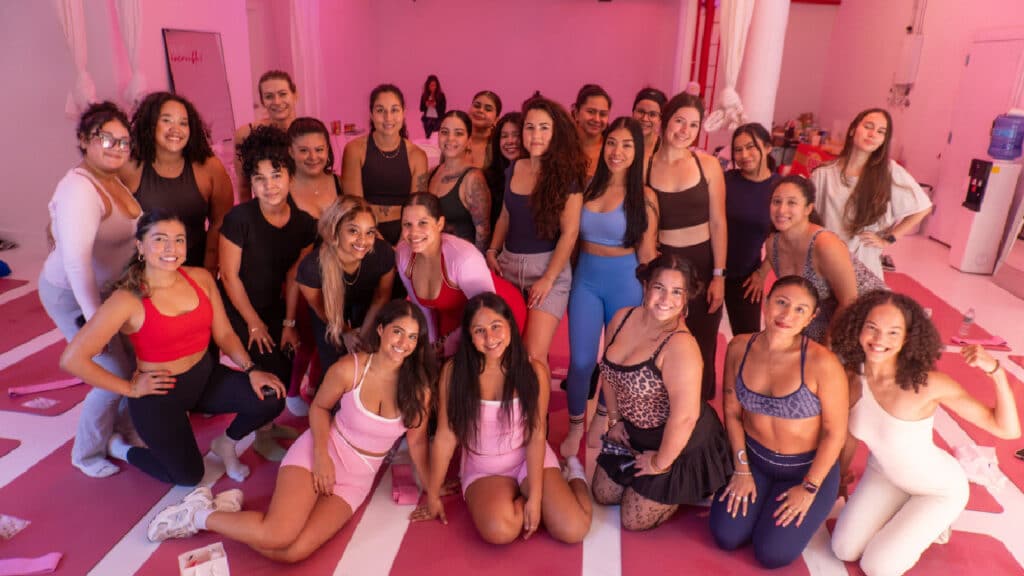‘Designer Vaginas’: The Dangerous Trend of Labiaplasty Making a Comeback
There’s one trend we wished it never came back—and we’re not talking about our teenage horrible wardrobes. We’re talking about labiaplasty.
Back in 2016, more and more women were hearing about the possibility of maybe doing some cosmetic surgery down there. Nobody talked about it in public spaces. But many—out of curiosity or genuine insecurity—went ahead, did the budget, and even got their labia “trimmed.”
Now, after a boom in the cosmetic surgery world, the trend is coming back strong, especially among teenagers and young women. According to the HER Wellness Health Center, teenage girls, “some as young as nine years old,” are requesting labiaplasty or vaginal reconstructive surgery because they are self-conscious about how their genitals look.
What exactly is a labiaplasty?
There are a bunch of options under the umbrella of female genital cosmetic surgery. These procedures alter the appearance of the genital area, mainly in the absence of clear physical or functional medical necessity.
While procedures available include clitoral hood reduction, tightening of the vaginal opening, and even G-spot augmentation, labiaplasty is, by far, the most popular.
According to MedEsthetics, a labiaplasty is a cosmetic skin procedure in which a surgeon trims the inner labial skin of the labia (labia minor) and tucks it behind the outer labia (labia majora).
They perform the procedure in the office using local numbing medication. You can drive home from the procedure and return to light routine activities by day three or four.
But why in God’s name would someone want to ‘trim’ their genitals?
Yes, there are women who suffer from medical issues such as discomfort during intercourse, chronic irritation, or infection. But the main reason people look for a labiaplasty is aesthetic.
The once-taboo procedure has gained new popularity, especially among young people. They call it “designer vagina surgery.“ And new research has found that the main driver is mainstream pornography and social media.
Once again, it’s all about unrealistic body standards. The male gaze behind the camera wants to see Barbie-like genitals, thus putting pressure on young girls about how theirs should look like.
Most teenagers don’t know the difference between vagina, vulva, and labia—yet they’re ready to go under the knife
A new report found that almost a quarter (23%) of girls, women, and gender-diverse people aged 18 to 24 feel anxious, unhappy, or embarrassed about how their labia look. Similarly, 35% said they associated it with negative words like “weird,” “disgusting,” or “ugly.”
In the United States, from 2015 to 2021, the number of labiaplasties rose from 8,745 to 18,813, according to The Aesthetic Society. Worldwide, the International Society of Aesthetic Plastic Surgery reported 164,667 labiaplasties in 2020, a 73% increase from 2015. Appearance concerns are the primary motivating factor.
“These concerns are in spite of the vast majority of women seeking labiaplasty having labia minora within normal size and appearance ranges but desiring a ‘neat’ and ‘tidy’ aesthetic,” wrote Dr. Gemma Sharp, associate professor at the Department of Neuroscience in the Monash University in Melbourne, Australia.
Another danger of aesthetic misconceptions
While cosmetic surgeons worldwide are more than happy to ride the way of the labiaplasty trend, researchers are increasingly worried.
“There are all sorts of different preferences for both parts and really, there is no ‘standard’ or ‘normal.’ It is all normal, and all should be accepted as such,” Dr. Alexes Hazen, MD, associate professor at the Hansjorg Wyss Department of Plastic Surgery and director at the Aesthetic Surgery Center at the NYU Langone Medical Center, tells Teen Vogue.
That’s why “sex education on how our bodies are different is so important,” Dr. Hazen added. In short, the increase in this type of surgery is “likely due to lack of acceptance of our own bodies,” she said.
This is enhanced by the standard of women in porn with “tidy” vaginas. “It’s likely that our body-conscious society desires to appear like models or some norm that is considered ideal, though not necessarily realistic,” Dr. Hazen says. “Due to the styling of pubic hair and the fact that many young women either have no pubic hair, due to removal techniques, or minimal pubic hair… This exposes the appearance of the vagina and increases awareness as to the look of the labia.”
What many ignore is that the vagina and labia change throughout puberty, well into mature life, pregnancy, and hormone changes. However, once again, social media and pornography are disguising misogyny with “trends” and impossible—most often, dangerous—standards.




